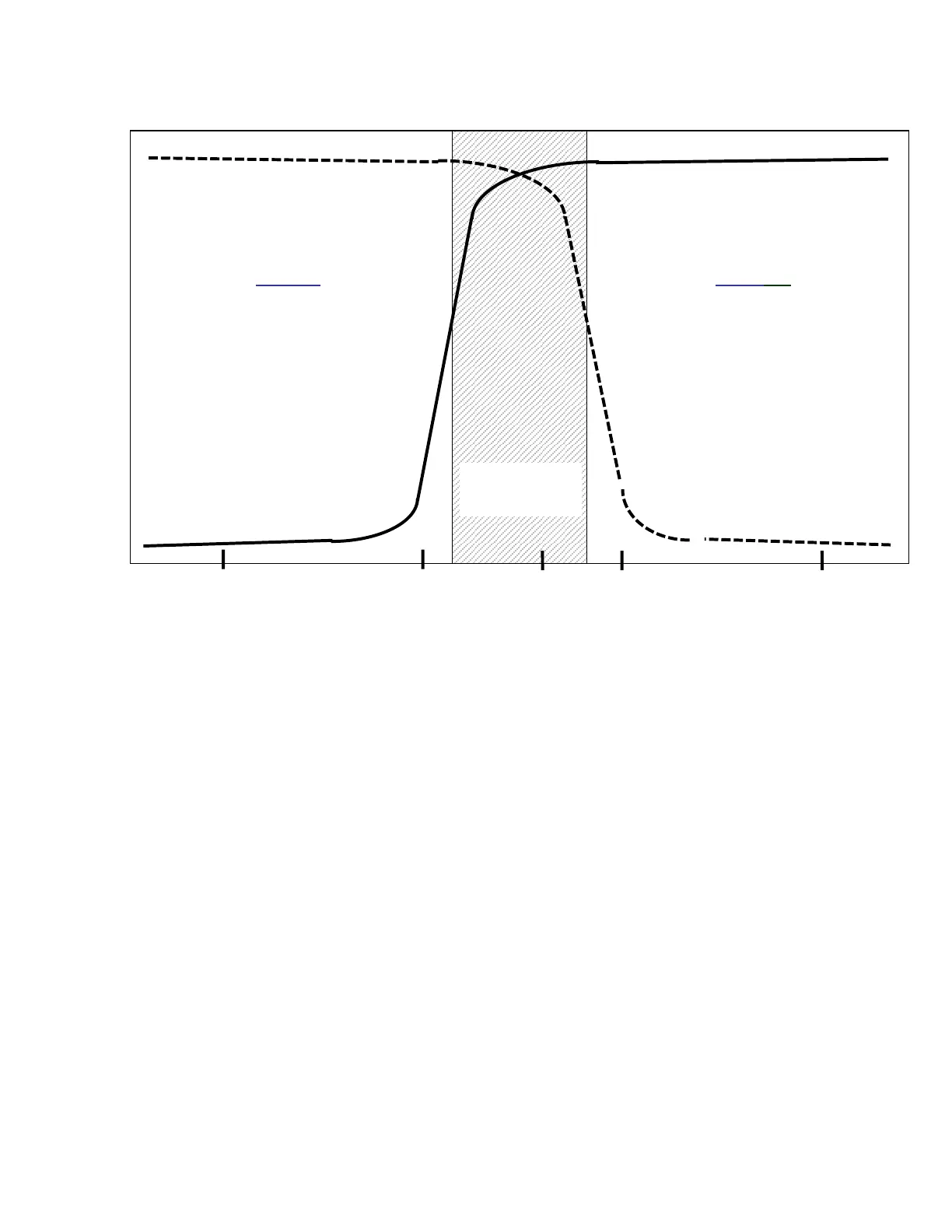Fundamentals Multec 3.5 Fuel Injector Application Manual
2-6 Delphi Energy and Chassis Systems
Revision: 11/05-1
Figure 2-2 - Air Fuel Ratio Effect on Catalytic Converter Efficiency
2.2.1.4 Lean Mixtures
• A mixture with "excess air"; also described by a Lambda >1.00 or an
equivalence ratio <1.00
Lean mixtures have excess oxygen and higher combustion temperatures
resulting in increased oxides of nitrogen (NO
x
) emissions. Nitric oxide
(NO) is the primary oxide created. It forms at a significant rate when
combustion chamber temperatures are above 1200
o
F (650
o
C.) The rate
of NO
x
formation increases with excess oxygen concentration,
temperature and time at temperature. NO
x
is typically highest just lean of
stoichiometry. Lean mixtures above a 16 – 17 to 1 air/fuel ratio decrease
NO
x
production due to the lowering of combustion temperatures.
While NO
x
production is an undesirable product of running slightly lean,
there are several benefits that can be realized by running lean of
stoichiometry. A controlled lean combustion process can reduce the
output of hydrocarbon (HC) and carbon monoxide (CO) emissions, as well
as reducing fuel consumption. Diluting the intake charge with a non-
Conversion Efficiency for a Typical Three-Way Catalyst
NO
CO
Air/Fuel Ratio
Lean Region: where excess O
2
is
available to oxidize HC & CO.
(Oxidizing means adding oxygen)
Rich Region: where little O
2
is
available, so reduction can easily
be done to NO
X
. (Reduction
means stripping away oxygen)
100
80
60
40
13.0 14.0 14.6 15.0 16.0
Window
+/- 0.3

